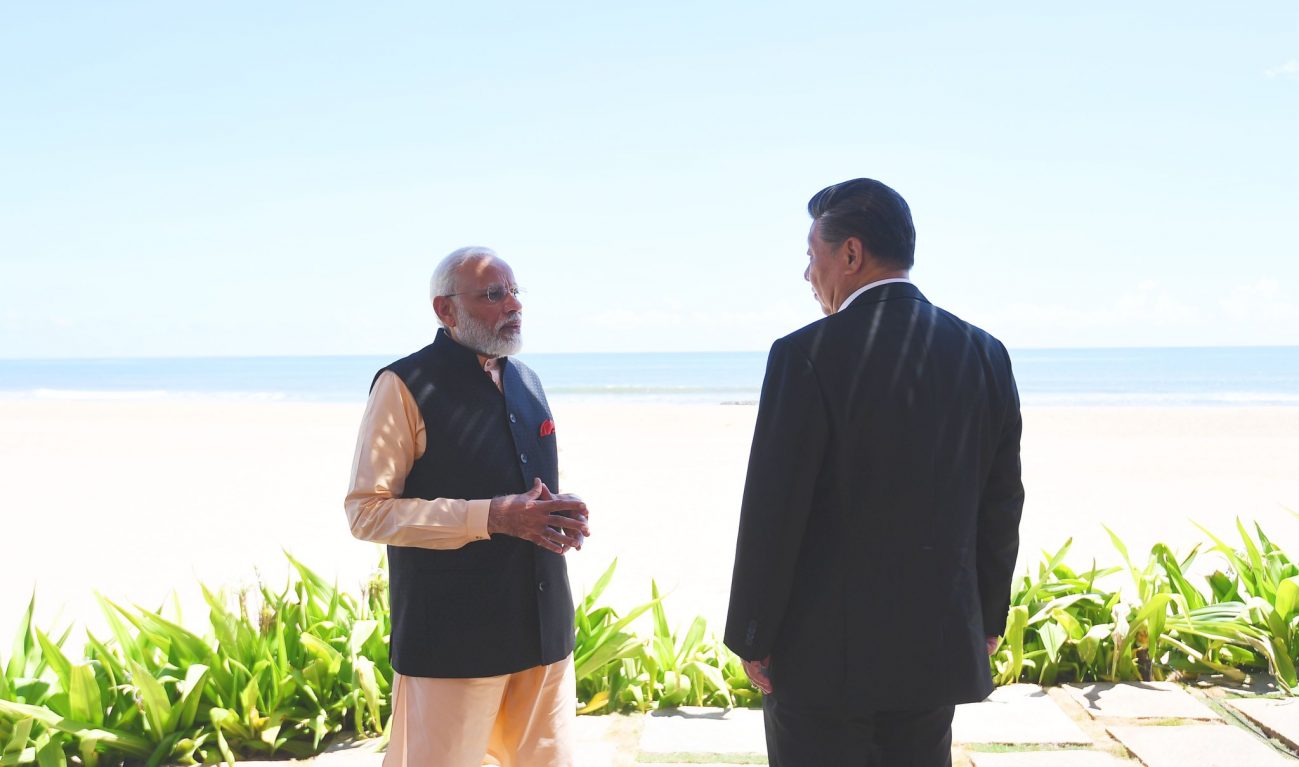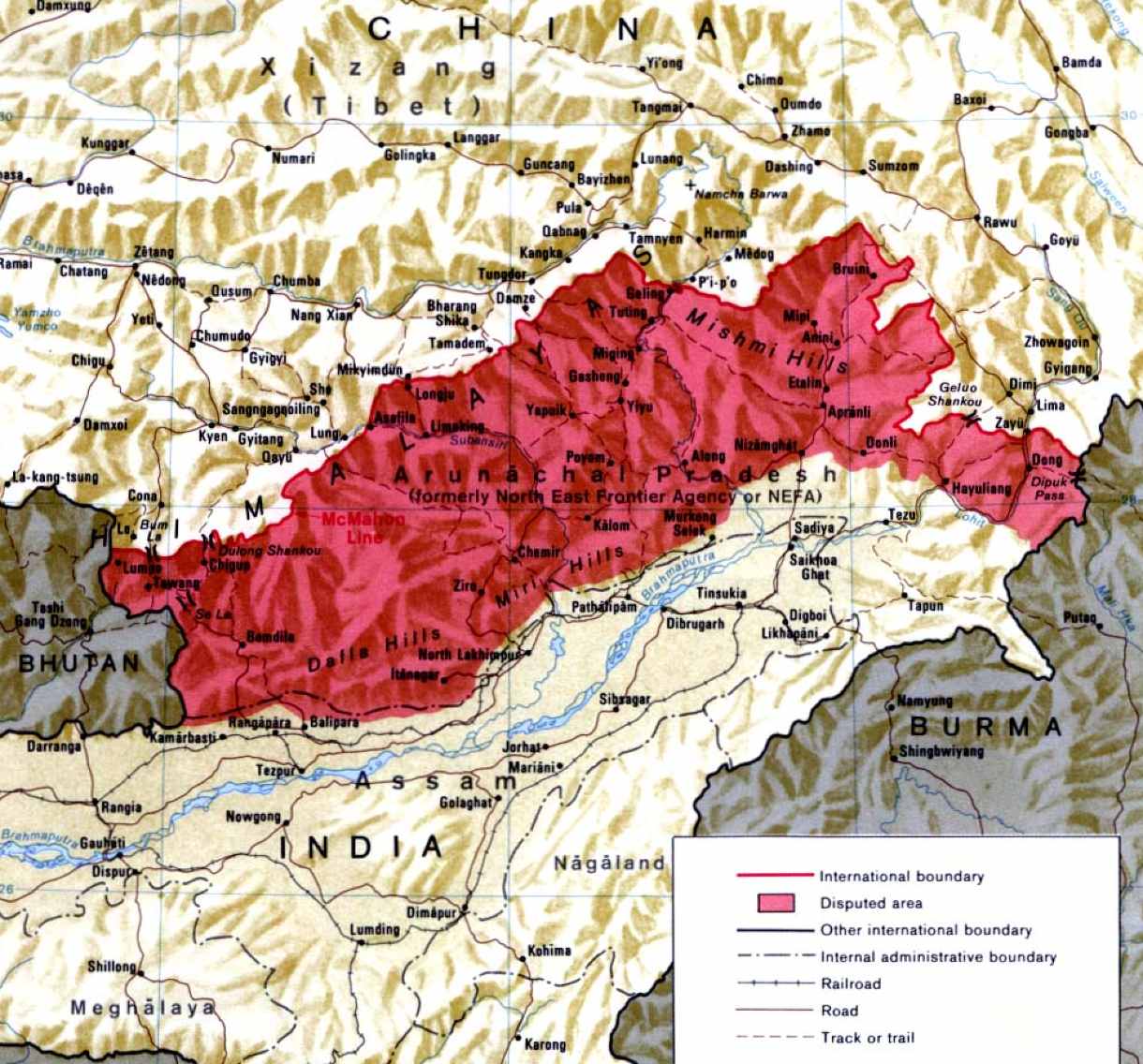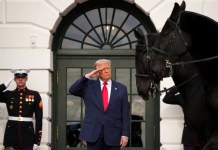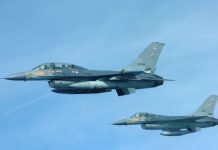Unlike its aggressive strategic designs that resulted in the major clash with India in Ladakh’s Galwan valley in June 2020, the latest India-China skirmishes in Tawang on December 9 seem to have political calculations or worries on Beijing’s part over Tibet and Taiwan.
In Ladakh, there is now a standoff between the Indian and Chinese troops. There might have been some disengagement here and there, but the Chinese are in no mood to vacate territory claimed by India in the Depsang plains of Ladakh.
Chinese are very particular over their hold in the Siachen area and broad strategic objective ensuring a safe and secure road to the Indian Ocean at Pakistan’s Gwadar that has geopolitical and geoeconomic implications.
Of course, the standoff in the northernmost part of the Line of Control (LAC) in Ladakh has not deterred the Chinese from transgressing it in the central and eastern regions.
The LAC is a disputed 3488-kilometer-long de facto border. A face-off in January 2021 along the part between China and India’s Sikkim left troops on both sides injured.
In late August 2021, over 100 Chinese soldiers had transgressed at least five kilometers into Indian territory in Uttarakhand’s Barahoti and damaged infrastructure, including a bridge, before retreating. And in October 2021, Indian and Chinese troops were engaged in a face-off in Tawang after scores of Chinese soldiers crossed over to the Indian side.
However, unlike the clash in Ladakh in 2020, the subsequent ones, including the latest on December 9 in Tawang, have been quickly stabilized by the local commanders of both sides, and there have been no serious injuries or death to their soldiers. Both sides have disengaged from the areas of friction.
As India’s Defense Minister Rajnath Singh told the Parliament on the latest incident, the encounter started when Chinese troops “encroached into Indian territory” and “unilaterally tried to change the status quo” along the disputed border near the Yangtse area.
He said the Indian soldiers responded firmly, prevented the Chinese army from “transgressing into our territory,” and forced them to return to their posts. He added that some soldiers from both sides had been injured in the skirmish, but no Indian soldiers had been “hurt or seriously injured” in the clash.
The Chinese version of the incident is not that detailed. However, the Chinese PLA western theatre command’s spokesperson, Senior Colonel Long Shaohua, claimed that a “routine patrol” by Chinese troops “encountered obstruction from the Indian troops who illegally crossed the LAC. The Chinese troops made a professional, normative and resolute response, bringing the on-site situation under control. Up to now, the Chinese and Indian troops have disengaged.”
China’s Fears
However, Tawang has always been an area of great political significance for China because of its strong historical, cultural, and economic links with Tibet. Tawang hosts Galden Namgey Lhatse, the world’s second-largest monastery of Tibetan Buddhism, the largest being the Potala Palace in Lhasa.
Tawang is also the birthplace of the sixth Dalai Lama, who, it is believed, was born in the modest Urgelling Gompa.
China fears that the current and 14th Dalai Lama, with his seat in Dharamshala town in the Indian state of Himachal Pradesh, may ordain his successor outside present-day Tibet, which is under Chinese occupation.
If this were to happen, Tawang, with its historical links to Tibetan Buddhism, and the presence of many Tibetan refugees in India, would be the ideal place.
As noted in the EurAsian Times earlier, Beijing claims its jurisdiction over Dalai Lama’s reincarnation, with Chinese scholars saying that “The affairs related to the reincarnation of the 14th Dalai Lama belong to the domestic affairs of Tibetan Buddhism in China, which must respect the wishes of the Chinese Tibetan Buddhist community and the majority of religious believers, and accept the management of the Chinese government.
This contrasts sharply with the Tibetan tradition of the living Dalai Lama, indicating his successor before his death. The 14th Dalai Lama has said: “The authoritarian rulers of the People’s Republic of China, who as communists reject religion, but still involve themselves in religious affairs, have imposed a so-called re-education campaign […] concerning the control and recognition of reincarnations […] This is outrageous and disgraceful. The enforcement of various inappropriate methods for recognizing reincarnations to eradicate our unique Tibetan cultural traditions is damaging and will be difficult to repair.”
He has further added: “Moreover, they say they are waiting for my death and will recognize a 15th Dalai Lama of their choice. It is clear from their recent rules and regulations and subsequent declarations that they have a detailed strategy to deceive Tibetans, followers of the Tibetan Buddhist tradition, and the world community. Therefore, while I remain physically and mentally fit, it seems important that we draw up clear guidelines to recognize the next Dalai Lama, so there is no room for doubt or deception.”

The 14th Dalai Lama, now 87 years old, has often repeated that the purpose of reincarnation is “to fulfill the previous [incarnation’s] life task” and that his life is outside Tibet and “therefore my reincarnation will logically be found outside [the PRC].”
Naturally, this assertion has disturbed Beijing a great deal. And Tawang, for it has become very important. For China, control over Tawang is linked to the legitimacy of its hold on Tibet. If the Dalai Lama finds a successor in Tawang, he will enjoy legitimacy and the spiritual authority required to influence Tibet effectively.
Because of this fear, China opposes the Dalai Lama’s visits to Tawang and stresses its claim to the town. And this explains why Dai Bingguo, who served as China’s special representative on the boundary issue between 2003 and 2013, has suggested that the border dispute could be resolved if New Delhi accepts Beijing’s claim over Tawang.
China, Dalai Lama, And Taiwan
For China, this Tibetan factor, particularly the role of the Dalai Lama, is also linked to Taiwan, where a considerable number of Tibetan exiles live. Taiwan’s attitude towards Tibet has changed of late. It may be noted that after moving to Taiwan, the Kuomintang (KMT) re-established the Mongol and Tibetan Affairs Commission and the constitutional provision to assert sovereignty over Tibet.
Under the KMT rule, there was no difference between Beijing and Taipei regarding the position in Tibet and Inner Mongolia. After all, the KMT, which claimed to represent the real government of the Chinese people, shared with the Communist rulers in Beijing the same hard-line stance on foreign and defense policies.
Tibetans and Mongolians coming to Taiwan were treated as citizens of the country, and the Interior Ministry handled their visits. Therefore, when His Holiness Dalai Lama visited Taiwan in March 1997, he was treated as a religious leader, and the nitty-gritty of his trip, namely the travel documents and living arrangements, was looked after by the Interior Ministry.
However, with the Democratic Progressive Party (DPP) assuming office in 2000, the above policy lost its sheen. The Special Commission on Tibet and Mongolia was abolished. The divisions on them in the Interior Ministry exist now on paper only.
As a result, when the Dalai Lama made his second trip to Taiwan in April 2001, he was virtually treated as a Head of State. His entire visit, during which he met President Chen and former President Lee Teng-Hui of the KMT, was handled by Taiwan’s Foreign Ministry.
But this celebratory period in Taiwan-Tibet relations was short-lived with a change of political leadership in Taiwan. When the KMT returned to power, President Ma Ying-jeou gave more importance to pleasing China and remaining in its good book for normalizing cross-strait relations with China.
Ma avoided the Dalai Lama during his third visit to Taiwan in 2009 to pray for and bless the typhoon victims that killed 463 people.
Of course, the DPP is now in power. There has been a series of diplomatic interactions between Taiwan and the exile -Tibetan government of late. In fact, after the recent visit of US House Speaker Nancy Pelosi to Taiwan, there have been popular demands for “His Holiness the Dalai Lama to visit Taipei.”
And the universities in Taiwan now encourage studies on the Dalai lama and Tibetan Buddhism, particularly “the classification of four Kayas of the Buddha, the system of reincarnation in Tibet, the process of recognizing reincarnations, and how the topic of reincarnation received the global significance.”

China Challenging Countries Across The World
All these are not to the liking of Beijing. But, the increasingly hostile Chinese behaviors towards India and Taiwan over Tibet need not be seen in isolation. China is now fighting many countries in many ways at many levels. The intensity may not be the same in all these fights, but unmistakably there are fights.
China has challenged the United States in the South China Sea and the East China Sea by interfering with its surveillance activities. It aggravates territorial disputes by displaying muscular behavior in the East China Sea with Japan and the South China Sea with Vietnam and the Philippines.
It has intruded into Taiwan’s air space many times in the recent past. It has threatened Australia by cutting back imports from that country just because it raised questions about China’s handling of Covid-19.
China now claims internationally that it is no less than the United States in power and has reached and abandoned the conservative and low-profile approach to foreign affairs.
There are merits in the arguments that rising Chinese hegemony has something to do with its domestic factors. Here, there are three components – an upsurge of nationalism, bureaucratic tussles, and elites-rivalry.
Given that China is a totalitarian state, the ‘mob’ nationalism is often manufactured by the top leadership, with regular appeals by the Chinese leadership to adopt aggressive policies for boosting and recovering China’s territorial claims. Once nationalist fervor has been whipped up, leaders can claim that their choices were constrained and compromise is difficult.
China’s assertiveness and hard-line policy towards India, Tibet, and Taiwan can also be explained in terms of the influence of the People’s Liberation Army on Chinese foreign policy. Under President Xi Jinping, China’s Central Military Commission (CMC), which sits at the helm of the PLA and controls China’s domestic security forces and the People’s Armed Police, has pushed up top PLA officers to have more significant experience serving at high levels across the military bureaucracy.
Xi is the Chairman of the CMC, and he firmly believes in Mao Zedong’s dictum that “political power grows out of the barrel of a gun.”
Similarly, despite all claims of Xi’s supremacy as a leader, the factor of elite competition does exist in China. Xi’s mishandling of the growing unemployment and declining economy and the severe mass protests against him in various parts of the country over anti-Covid measures have revealed what experts say is the “rotten core of Chinese governance.” A growing number of Chinese are now casting aside their fear of totalitarian Communist rule.
Against this background, China’s assertive or aggressive foreign behavior and military build-up may well be a way out to divert the direction of domestic difficulties towards domestic solidarity.
And that is not good news for India, Tibet, or Taiwan. They have to remain alert and keep the powder dry. There is no scope for complacency.
- Author and veteran journalist Prakash Nanda has been commenting on politics, foreign policy on strategic affairs for nearly three decades. A former National Fellow of the Indian Council for Historical Research and recipient of the Seoul Peace Prize Scholarship, he is also a Distinguished Fellow at the Institute of Peace and Conflict Studies.
- CONTACT: prakash.nanda (at) hotmail.com
- Follow EurAsian Times on Google News




